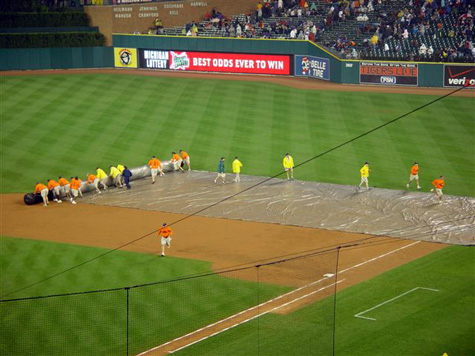I think of myself as a focused and self disciplined individual. I make a sincere effort to be organized. I am a” deal with it within twenty-four hours” girl. I try to follow a thought along, even if it is one layer under the day’s business, as long as it takes, to get that thought in a form that energizes me enough to speak, or draw. For me doing a design doesn’t stop with the drawing. A design needs explanation, supporting photographs or other material, a time frame, a plan to stage the installation. It has taken me fifteen years to install the landscape on my lot.5; why wouldn’t I address staging with everyone else?
Walking through the store in the am, on my way to my office, I can spot 15 things that need cleaning, weeding, straightening, grooming, levelling, vignetting, attention-and water. I can spot a plant that needs water when my eyes are closed. I can as well spot from yards away a plant whose green leaves have gone dusty from lack of water. I call this focused; Buck calls this obsessed. I about fainted with shock and surprise the first time he casually suggested it might be better for me all around, if I could realize that sometimes it’s good to give up. Let things go that don’t deserve your energy. Sure, be in charge, put your name to your work, think everything through, do the best you can. But most of all, give up when it’s time-good things can come of giving up. Other outcomes can be good.
I am sponsoring a tour of gardens of my design in one week, July 19, to benefit the Greening of Detroit. They have been planting trees, sponsoring urban gardens, teaching people to plant and grow to feed their families, and sell at the Eastern Market in Detroit, for the past 20 years. They impressed me. Last year we raised 10,000.00 for them; I am very proud of this. But today I am seeing that my own garden, which is on tour, is two weeks behind a normal season. There will be no Limelight hydrangeas in bloom, and my pots are not the best, given the cool weather. I see weeds, fungus, unfinished areas-and I am the person who ventured in last Sunday’s opinion post to suggest there is no World Series of Gardening. Talk is cheap, is it not??
The entire impetus for this post is a pair of fabulous Italian pots on pedestals, on my terrace, planted identically. Both pots are coming along fine, albeit slowly-except for the centerpiece plant. The nicotiana mutabilis in the north pot has spiked, and is blooming. The southern nicotiana mutabilis is in stall mode. For three days I have been agonizing over replacing that recaltricant nicotiana. Given Buck’s commentary, I think I will stand pat with the two pots that do not match. Do these two glaringly unmatched pots say everything about when it is good to give in, and give up? Do they not speak reams to what every gardener aims for, and does not get? Buck says not one gardener on the tour will fail to recognize that in spite of my efforts, our efforts, I am not really in charge. He thinks I should leave it be. I think he may be right. Better the garden be real, than engineered like a stage set.
No matter how enchanted I am with a design, my relationship with my client comes first. My ideas are just my ideas. Not the be all and end all. Great designs depend on a solid relationship between me , and my client -and whatever shakes out from there. Giving in is not necessarily a gesture of defeat. Giving in can be a recognition of the other party; a resolution not anticipated. Giving in can be a way of letting go of issues that have no resolution, for better or for worse. Giving in is sometimes a striking move; amazingly, things can be better for it. I have landscapes in which the big idea came from the client that work just fine. My two unmatched pots which will be going on tour-they are charming me.



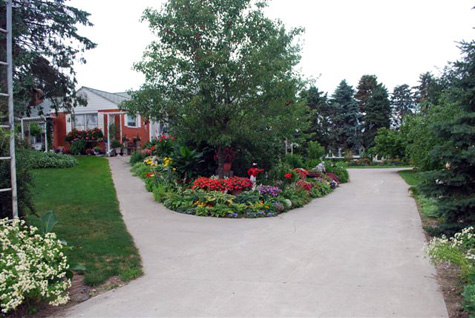
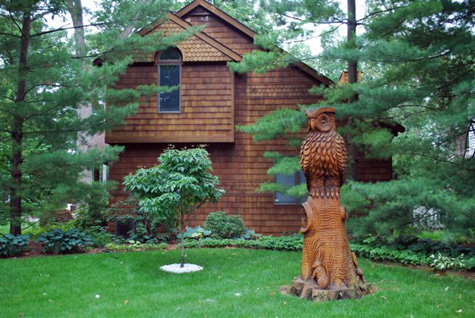
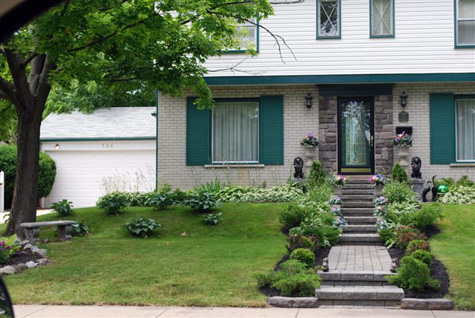

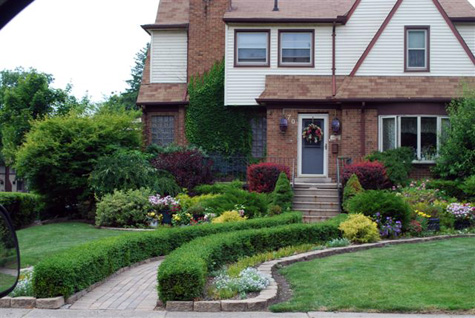
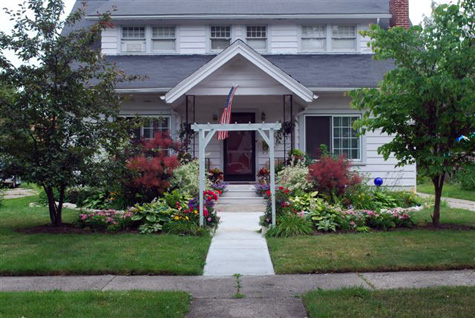
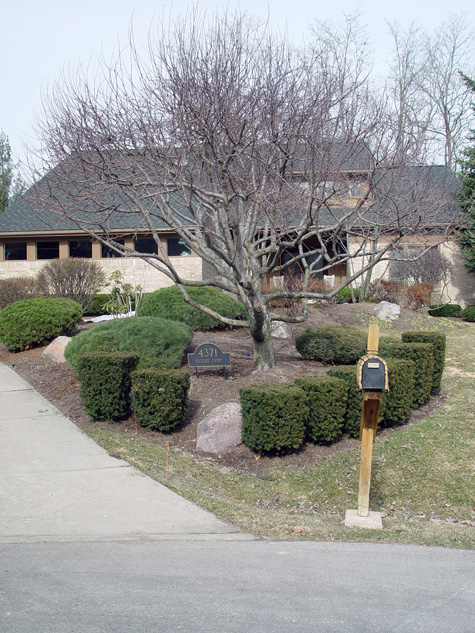
 The house sits on a piece of property that is very high and steeply sloped. The berms only exacerbated this precarious look; the second order of business was to grade. We dug up as much plant material as we could, and heeled it in. We cut the berms down, and filled in the slope to soften it. We added many more yards of soil. The existing plants we were able to save we grouped together, so every plant had like company, and replanted in another area of the yard.
The house sits on a piece of property that is very high and steeply sloped. The berms only exacerbated this precarious look; the second order of business was to grade. We dug up as much plant material as we could, and heeled it in. We cut the berms down, and filled in the slope to soften it. We added many more yards of soil. The existing plants we were able to save we grouped together, so every plant had like company, and replanted in another area of the yard. 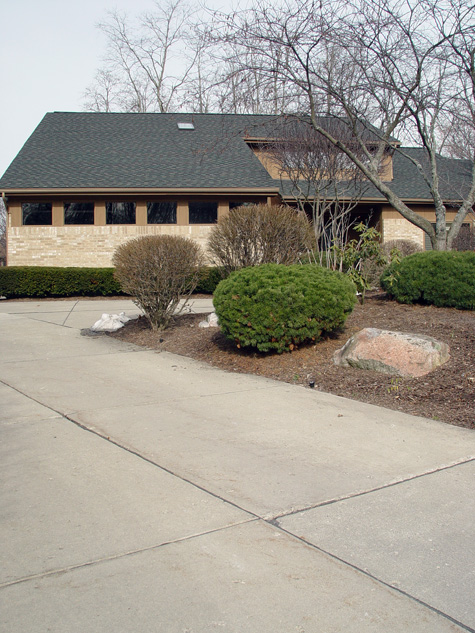 The bermed soil right up to the drive edge meant dirt and debris on the drive, non-stop. Any design needs a component that addresses ease of maintenance. I am happy to attend to the maintenance of my pots every day. Needing to sweep debris off a drive every day is annoying. This kind of thing can make people dislike gardening for no good reason.
The bermed soil right up to the drive edge meant dirt and debris on the drive, non-stop. Any design needs a component that addresses ease of maintenance. I am happy to attend to the maintenance of my pots every day. Needing to sweep debris off a drive every day is annoying. This kind of thing can make people dislike gardening for no good reason.  Once the grade issues were addressed in a way that worked, we laid out the design. My client likes white, simple and dramatic. She wanted to drive up to that, love it, and then go to her back yard garden to spend time. This first element of drama came from the grading.
Once the grade issues were addressed in a way that worked, we laid out the design. My client likes white, simple and dramatic. She wanted to drive up to that, love it, and then go to her back yard garden to spend time. This first element of drama came from the grading. 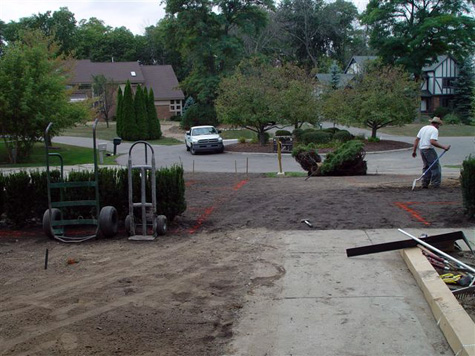 The irregularly sloping and steep ground was graded to slope gently on a consistent angle to the street. Particular care was taken to insure that the view from the house to the street would feature ground with sculptural appeal.
The irregularly sloping and steep ground was graded to slope gently on a consistent angle to the street. Particular care was taken to insure that the view from the house to the street would feature ground with sculptural appeal.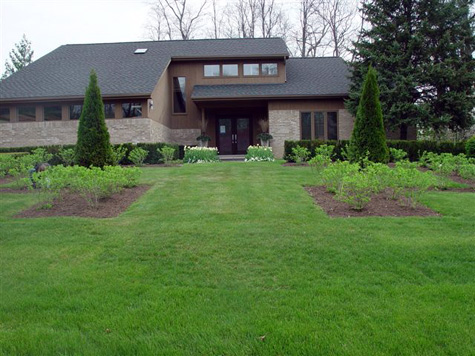 For anyone who likes white, dramatic and simple, Limelight hydrangeas are a logical choice. The dark green yews, and the sleekly trimmed arborvitae make great companions to all the profusion to come.
For anyone who likes white, dramatic and simple, Limelight hydrangeas are a logical choice. The dark green yews, and the sleekly trimmed arborvitae make great companions to all the profusion to come.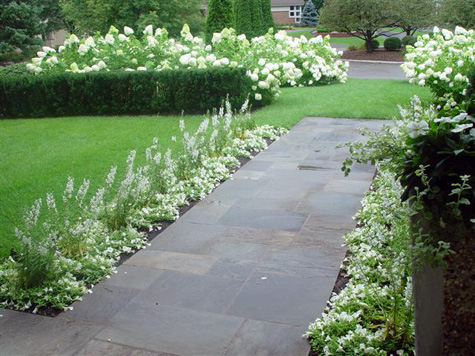 The walk was redone in chocolate, or lilac bluestone. This is an unusual color, but great looking with the color of the house. The walk is bordered in annuals in the summer, and white tulips in the spring.
The walk was redone in chocolate, or lilac bluestone. This is an unusual color, but great looking with the color of the house. The walk is bordered in annuals in the summer, and white tulips in the spring. 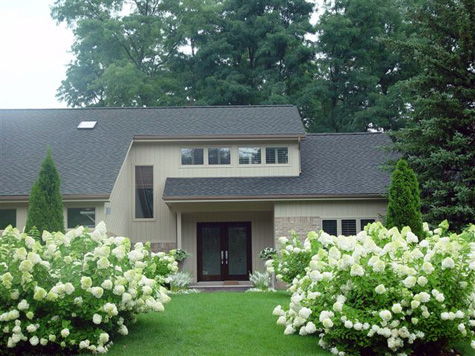 This new look helps to focus some attention on the architecture of the house, and features the front porch. We enlarged the front porch, and repainted all the trim and wood on the house. Sometimes a landscape project can spill over into another area of design. In this case, a new landscape helped generate changes to the house, lighting, and porch.
This new look helps to focus some attention on the architecture of the house, and features the front porch. We enlarged the front porch, and repainted all the trim and wood on the house. Sometimes a landscape project can spill over into another area of design. In this case, a new landscape helped generate changes to the house, lighting, and porch.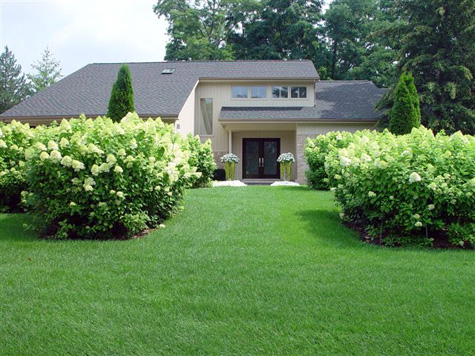 A pair of large contemporary French faux bois pots flank the front door; what a handsome view this is now. Very friendly formal, I call this. She calls it a blast.
A pair of large contemporary French faux bois pots flank the front door; what a handsome view this is now. Very friendly formal, I call this. She calls it a blast.
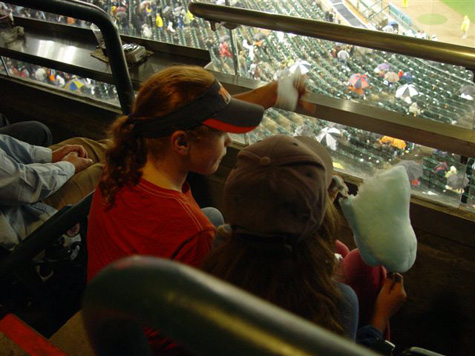
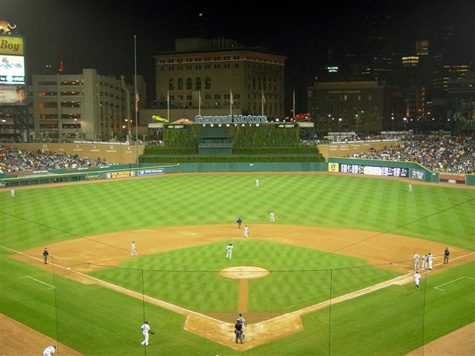 �
�